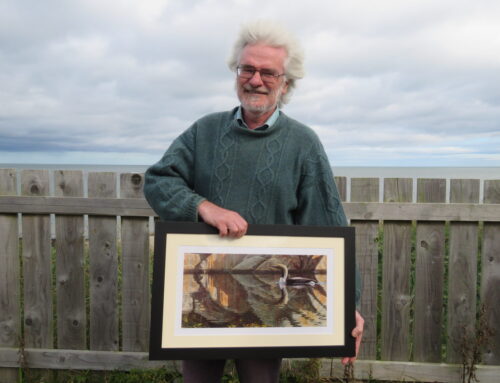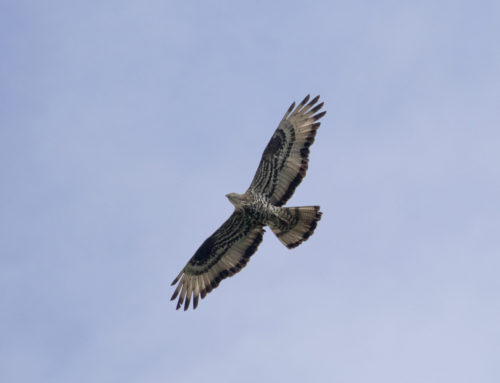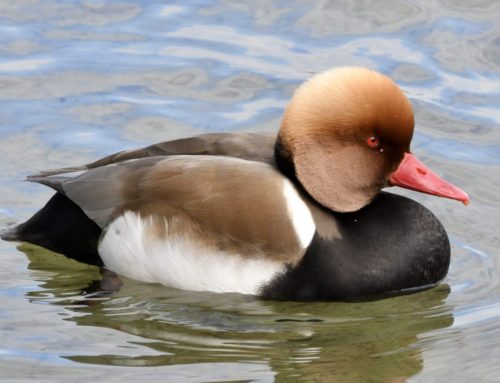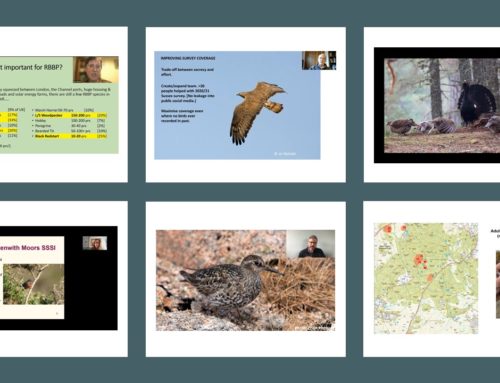New RBBP guidance on the reporting of Rare Breeding Birds (issued April 2021).

Long-eared Owl by Mark Eaton
It is an exciting time of year for birdwatching, and in particular it’s a great time for finding rare breeding birds. Many species are well into their breeding cycles, others are just beginning to start the business of establishing territories, whilst we still await the return of some of migrant species from further south. Whilst not many of us are likely to find a Bee-eater colony, or come across a pair of Purple Sandpipers on a remote Scottish peak, many birdwatchers will encounter rare breeding birds while they are out this spring.
The Rare Breeding Bird Panel seeks to encourage the recording of such rare breeders, and the reporting of these records through established channels to enable us to monitor their vulnerable populations – our website has lots of information on this work, and how birdwatchers can contribute. The Panel also seeks to aid the conservation of rare breeding birds. Most obviously, this is through our monitoring, and conservation and research uses of our vast archive. But in addition, we work to ensure that the birds themselves are kept safe, by supporting efforts to minimise the risks that they face: the threat of deliberate attempts to persecute raptors, and to take the eggs or chicks of rare breeding birds, and the risk of accidental disturbance to breeding attempts. Sadly, disturbance through recreational activities around breeding sites may be growing, and in particular the risk of disturbance through the presence of birdwatchers and bird photographers is of increasing concern. The RBBP’s statement on the disturbance of rare breeding birds can be found here, and it should be remembered that most rare breeding bird species are listed on Schedule 1 of the Wildlife & Countryside Act 1981 (as amended). It is an offence to intentionally disturb birds listed on Schedule 1 whilst they are building a nest, or in, on or near a nest containing eggs or young; or to disturb dependent young even if not in the nest. It is also an offence to recklessly disturb these species, through for instance trying to get a better view or photograph by going too close to the birds, leading to the potential for accidental disturbance.
With that in mind, we have just published revised guidance on the reporting of rare breeding birds during the breeding season, in order to encourage birdwatchers to think carefully about how the share any exciting discoveries of rare breeding birds, or those that might be breeding. We urge all birdwatchers to familiarise themselves with this guidance, and in particular to remember three main points:
- If you find a rare breeding bird species in the breeding season, please consider the possibility that it might be breeding, even if this is not immediately obvious. In the excitement of finding a rare egret or pair of Cranes on a local wetland, a pair of Black-necked Grebes on a gravel pit, or a Marsh Warbler singing in coastal scrub, the initial reaction may be to share the joy and spread the news. Nowadays that can be done in the blink of an eye, far and wide, through a wide variety of electronic means – message boards, Twitter, Facebook, WhatsApp, as well as through the Bird Information News Services of BirdGuides and Rare Bird Alert (as well as the old-fashioned way of telling a friend). But in these cases, and many others, there’s a real chance that these birds are attempting to breed, even if this is at a site they are new at. Many species are changing their breeding distributions rapidly, and others have a peripatetic ecology, occupying different breeding sites from year to year. So please ask yourself, before pressing send… could these birds be breeding, or at least is there the potential for them to attempt to breed? Could, for example, this Marsh Warbler attract a mate and attempt to nest in that clump of Rosebay Willowherb?
- If the answer to the question above is “yes”, or at least “maybe”, then we recommend that finger hovers over the send button for a moment longer while you consider whether the news should be shared. The new RBBP guidance lists 37 species for which we advise against any records being released into the public domain during the breeding season. These range from the rarest of the rare, to some of the more widespread and less scarce species on the RBBP list which we nonetheless believe are vulnerable, such as Long-eared Owl. The exception would be instances in which such species are breeding at well-known sites where they are protected – we don’t expect the presence at Stone-curlews at Weeting, or Slavonian Grebes at Ruthven, to be kept a secret.In addition, the breeding locations of many other rare breeders are best not revealed, depending on their vulnerability to disturbance. Local context is important – telling your Twitter followers you’ve heard Corn Crakes while on holiday on Tiree is fine, but revealing the location of a singing Corn Crake at an unprotected site in southern England, where it may well receive high levels of disturbance, would be reckless and not in the bird’s best interests. The best first step if you are uncertain is to contact the relevant county bird recorder (list here) to share the record in confidence, and to seek advice. County recorders and bird clubs may issue their own advice on rare breeding species bespoke to the county in question – for example, such as Cornwall Bird Watching and Preservation Society have just done.
- Finally, to repeat myself: it is an offence to intentionally or recklessly disturb most rare breeding bird species in the UK. As well as the obvious crimes of killing birds, taking chicks and egg-collecting, this includes reckless disturbance whilst birds are building a nest, or in, on or near a nest containing eggs or young; or to disturb dependent young even if not in the nest. Birdwatchers or bird photographers aware of the presence of rare breeding birds, but still causing disturbance – accidental or otherwise – may be guilty of a wildlife crime. Birdwatchers witnessing such behaviour should report it to the police immediately, and to the RSPB at crime@rspb.org.uk.
Mark Eaton, RBBP Secretary. April 2021

Black Redstart by Adrian Darcy






